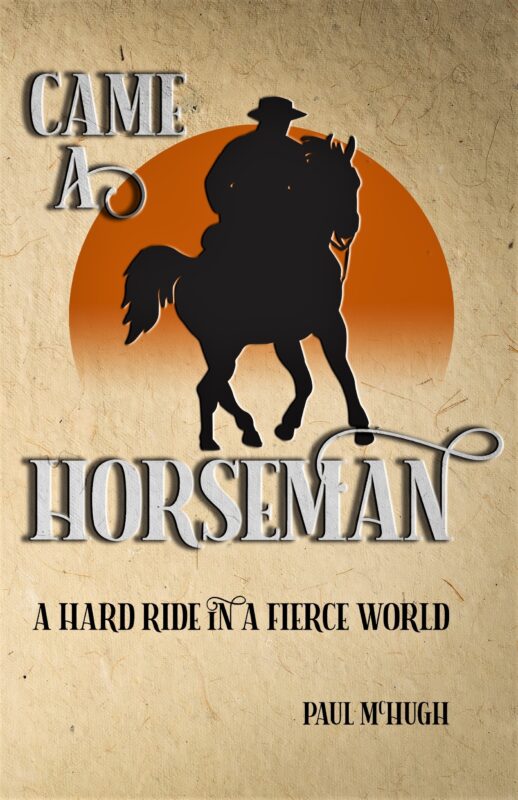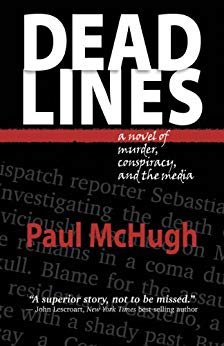California North Coast Series
By Paul McHugh
October 9
Lucky me! Dawn drove up from just south of San Francisco to share part of a day and evening with me on another gorgeous stretch of California’s North Coast. As long as you stay patient and flow with the rhythm of a curvy road, it’s a great drive across the Golden Gate Bridge and along Highway 1 to the north.

I feel happy and confident on the beach at Fort Ross; the end of our voyage is almost in sight. Photo by Dawn Garcia.
Thanks to the benevolent intercession of Sarah Gould and the kindness of the park officials, we got to spend it in the commandant’s quarters, a candle-lit room on the upper floor of the fort’s Kuskov House – named for Ivan Kuskov, the fort’s founder and one-time right-hand of Alexander Baranov, the supreme boss of the Russian-American Company.
Lounging in Officer Country
After spending a comfortable and relaxing night up there, the light of a balmy and clear morning filtered in through the house windows. We exited and strolled down to the cove to share coffee and breakfast with John Weed.

Launching from Fort Ross. Nothing wakes you up faster than a snootful of cold seawater. Photo by Dawn Garcia.
Then he and I packed up for a 21-mile sprint southward to Bodega Bay. A few fans of our voyage appeared on the beach to see us off, while Dawn recorded our departure for posterity with her camera.
Once outside the shelter of Little Ruminatsev (nee, “Sandy”) Cove, we finally could see the hand of cards the sea had dealt us today: a comparatively mild scenario of 7-foot seas with 13-seconds between crests, stroked by a mere 16-knot breeze.
“You want to go paddling today, even though it looks easy?” I asked Weed.
He shrugged.
Cruising Past the Russian River
So we went for it, hitting a steady, workmanlike pace all the way down the Sonoma County coast. We were fairly flying along by the time we passed the mouth of the Russian River with its distinctive landmark of Goat Rock. By now, I must say, both of us were quite fit. Not only physically conditioned to take hundreds of paddle strokes every hour, but thousands each day. And also able and willing to incorporate all the sea’s bumps and windy blasts into our forward progress as though they were no big deal. At this point it all just constituted another day at the office, so to speak.
Turning Down a Rescue

Weed and McHugh paddle on a windswept sea, past the headlands of Bodega Bay. Photo by Michael Maloney, S.F. Chronicle.
So it was a bit amusing when a power boat pulled up alongside us just to the north of Bodega Head, and its skipper leaned over the rail to inquire if we needed his help.
I told him – a bit saucily – that we both were fine, we’d seen much worse conditions, and by the way, how was he doing? Did he need any help from us? Baffled, frowning, he leaned back and shoved his throttles forward and disappeared from our view.
We rounded the headlands and stroked in to the shore of the long sand spit that constitutes the main and southern portion of Sonoma’s Doran County Park, made landfall and proceeded to occupy the camp site that I’d reserved in advance weeks earlier, for exactly, as it turned out, this precise evening. I’m not claiming prescience, just indicated that after giant distortions in our schedule over the course of a month, we were solidly back to paddling the plan.
We pitched tents, we unfurled mats and sleeping bags. But we did not need to make dinner, because we had someone bringing it. Not just anyone, but Dianne Levy, a long-time Chronicle staffer who’d played many roles at the paper over her long tenure, had just retired from the paper’s marketing department, had moved to Bodega, and on weekends sold her excellent paintings and photographic prints to tourists from a set-up on her front yard. Dianne brought us wine, hot pizza, and her own cheery presence, so she was welcome three times over.
Camping is good. Camping in style is even better.
But after we crawled into our tents and sleeping bags to nod off, the quiet essence of Bodega Bay drifted to us in the form of a salty breeze and the gentle rhythm of waves that rinsed the sheltered beach from the south.
On the Site of an Ancient Village
“Bodega,” is the Spanish word for a pantry, a cellar or a warehouse, and the bay was certainly used that way by both the Spanish and Russians. It was a lush and sheltered spot, blessed with a spring that gushed cold fresh-water in the headlands. Before both sets of Europeans used the place to rendezvous for their illicit trade deals (vainly forbidden by authorities in distant Mexico), the bay was a stronghold of the Coast Miwok tribal culture, which had settled at least six villages around the bay’s perimeter. One of those villages, Tokau, existed fairly close to our present location. I had no idea at all what “Tokau,” meant, but as I fell asleep, I was dreaming that the surf might tell me.









